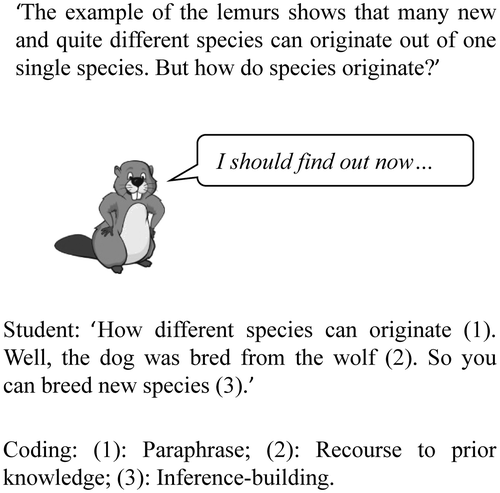Figures & data
Table 1. Structure and content of the two worked example sequences.
Table 2. Number of low-knowledge and high-knowledge prompts which were integrated into the worked examples for the LP, HP and LHP conditions.
Figure 1. Section of a worked out solution from the selection sequence with a self-explanation prompt (presented in the balloon) which should encourage paraphrasing, followed by the expressed self-explanation of a student with average prior knowledge as well as the coding.

